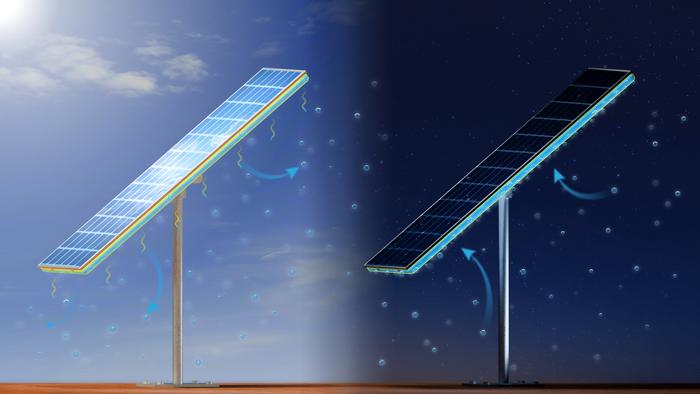Researchers in Saudi Arabia have developed a hydrogel composite that absorbs moisture in solar modules at night and facilitates evaporation cooling during daylight hours. The system has undergone laboratory tests and outdoor experiments on two continents.
A group led by scientists from King Abdullah University of Science and Technology (Kaust) from Saudi Arabia has developed a new, cheap passive refrigerator technology for PV panels.
It consists of Polyacrylic acid sodium salt (Easter) and lithium chloride (LICL) Hydrogelcomposites applied on the back of the solar module. “We specialize in materials that make passive cooling possible,” said researcher Qiaoqiang Gan. “These materials are thin and can be placed on different systems that require cooling to work, such as greenhouses and solar cells, without influencing performance.”
To make the composite, the researchers combined Licl and Easter with a ratio of 2: 1. After mixing the materials, they gut the mixture in a mold, where it was healed for an hour to form a flat shape. According to the academics, the specific ratio was selected to guarantee the resilience of the composite under extreme conditions, such as relative humidity levels of more than 90% and temperatures of more than 30 C.
“The composite operates the hygroscopic properties of the dryer, so that it can absorb moisture a night and facilitate evaporation cooling during daylight hours,” they explained. “In this composite, enlarged Easter molecules the water storage capacity through their highly hydrophilic carboxylate groups. Although Licl crystals act as hygroscopic agents that actively absorb moisture from the environment, the water stored in the composite is gradually released throughout the day for the balanced resalious, the balanced resalious, the balanced resalious, the balanced resalious replaced. “
To test their new development, the team used a polycrystalline silicon PV panel of 54 mm x 54 mm. A 7 mm thick layer was applied to its back and expanded to about 10 mm once water was absorbed. It was then tested at various locations, in laboratories, both in Saudi Aarabia and the United States, as well as in Veldtests. A 21-day field test took place in the city of Thuwal in Saudi Arabia, while an experiment of a month of Buffalo, New York took place.
“We have achieved impressive cooling performance in laboratory tests,” the team said. “When exposing to continuous solar radiation of 1 kW/m2 for 3 hours, the cooling capacity reached 373 W/m2, which decreased to 187 W/m2 after extending the work period to 12 hours. Under simulated real -time exterior radiation of the outdoors, the system supplied an average cooling capacity of 160 W/m2, Pieinging between 10.00 am, Piekering
Regarding the outside tests in Saudi Arabia, with a temperature of 37 ° C and a relative humidity of 53%, a persistent evaporation cooling of 175 W/m² was achieved. “Significant temperature drop of a maximum of 14.1 C was registered around noon (on average 12.5 ° C of 12: 00-13: 00), which led to a significant increase in the efficiency of the power conversion, from 13.1%to 14.7% – an improvement of approximately 12.2%,” they emphasized.
By testing in the United States, the team also concluded that the improvement of cooling efficiency extends the operational lifespan of PV panels by more than 200% and reduces the level of electricity by 18%. They also calculated that the material costs are approximately $ 37/m² and emphasized that it is “lower than most previous studies using hydrogel or non-hydrogel cooling methods.”
They presented their new technology in “Streamlined manufacture of a cheap hygroscopic composite for low -maintenance evaporation cooling of solar panels“Which was recently published in Materials Science & Engineering R. Scientists from King Abdullah University of Science and Technology of Saudi Arabia participated in the research in the research in Buffalo in the State University of New York.
This content is protected by copyright and may not be reused. If you want to work with us and reuse part of our content, please contact: editors@pv-magazine.com.

